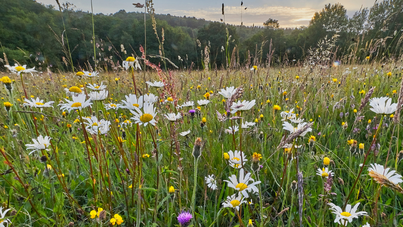Author
In this article we will look at what the options are in terms of off-site solutions. For an overview of the basics of Biodiversity Net Gain (BNG) please consult our earlier publications:
Biodiversity Net Gain: the basics | Michelmores
Biodiversity Net Gain : An update for developers | Michelmores
As stated in our article on the basics of BNG, there are three options (or a blended approach) to providing BNG as follows:
- On-site provision.
- Off-site provision.
- Statutory credits.
In terms of off-site provision, a developer has the following options:
- Secure off-site BNG itself.
- Purchase non-statutory BNG units via “habitat banks”.
- Purchase habitat units from the national biodiversity credits scheme – although note that this is seen as an option of last resort.
- Proceed by way of a combination of the above options.
In considering the available options, developers must apply the mitigation hierarchy – see our publication for more information in this regard.
In this article we focus on off-site BNG and the purchase of non-statutory BNG units.
Securing off-site BNG
Off-site BNG gains must be secured through a planning obligation or conservation covenant. In practical terms, in order to secure off-site BNG, a developer would need to either buy further land to deliver BNG (greater value being attributable to nearby gains) or enter into an agreement with a landowner in respect of the delivery and management of the gain site. Off-site BNG will be secured for at least 30 years through a conservation covenant or a planning obligation. It may be possible for a developer to pass on long term legal responsibility for the management of the off-site habitat and reporting to the landowner. However, the involvement of any third party land outside the development site may cause delay and uncertainty in the transaction. The cost of providing and managing off-site BNG will need to be considered particularly whether that can be brought into account when determining the purchase price of a site pursuant to a conditional contract or option agreement.
It is thought that off-site delivery is the best outcome for nature as it can make a lasting change to biodiversity levels. This gives developers an opportunity to demonstrate that they are playing a crucial role to the recovery of the natural environment. There may be opportunity to work with a nature conservation organisation.
It is possible that, where a developer has the benefit of conditional contracts or options in respect of strategic sites which are not able to be successfully promoted for development, they could seek to use that land for the delivery of off-site BNG and developers may, therefore, wish to review their land banks with this in mind.
Purchasing non-statutory BNG units
The provision of offsite BNG and the use of “habitat banks” is a rapidly emerging market. DEFRA, as part of their consultation on BNG, has published a market analysis that uses a working assumption that 50% of BNG would be delivered off-site which creates an annual demand of 6,200 biodiversity units with an estimated value of £135,000,000. This indicates the size of the potential habitat banking market.
As habitat enhancement/creation eligibility is retroactive with habitat enhanced or created since 30 January 2020 being eligible for BNG agreements, landowners and habitat bank providers (and even local planning authorities) are able to start producing the BNG now ahead of the mandatory 10% net gain requirements coming into form in November 2023. There are providers who are already establishing a network of habitat banks with the aim of having BNG units available in all local planning authority areas. The acquisition of BNG units by a developer leaves the developer with no ongoing liability, the unit provider having arrangements in place with the relevant landowner for the creation and management of the habitat. In order to be able to sell BNG units, the relevant provider will need to have secured the habitat bank through conservation covenants or planning obligations and to have registered the habitat bank with the relevant local planning authority.
Author
Michelmores Property Development Club
The Michelmores Property Development Club (PDC) is a forum for developers and property professionals to connect and share knowledge. The Club is celebrating its 22nd...
Michelmores Property Awards
Celebrating the best of property, development and construction in the South West The Michelmores Property Awards celebrate the best property, development and construction projects in...



